Regardless of how one defines diversity, presidents have long realized the importance of obtaining a broad range of advice from their Cabinet. Interestingly, our nation’s first president, George Washington, aimed to appoint a diverse Cabinet when he selected four white men who hailed from different regions of the country, represented various occupations, and possessed different opinions on pressing issues of the day. In fact, when Secretary of State Thomas Jefferson tried to retire, Washington pleaded with him to stay in office because “he thought it important to preserve the check of my opinions in the administration in order to keep things in their proper channel and prevent them from going too far.” Washington knew Secretary of Treasury Alexander Hamilton and Jefferson disagreed on almost everything, which is why he wanted them both in the Cabinet. Today, diversity is commonly thought of in terms of an increase in the number of women, as well as the appointment of racial and ethnic minorities who have previously been unrepresented at the highest levels of our government. Despite the tremendous growth of presidential responsibilities, and concomitant expansion and specialization of advisers since the days of George Washington, presidential focus on diversity has continued albeit with evolving incentives guiding the selection process.
While presidents have selected Cabinet secretaries from a variety of backgrounds since the early days of the republic, its evolving definition largely reflects the increasingly democratic features of our political system. Women, once denied the right to vote, recently celebrated the centennial anniversary of this privilege, while Black citizens waited until the civil rights advancements of the 1950s and 60s—a rocky road that still confronts access challenges. Our goal is to demonstrate how changes in society have meaningfully altered the president’s Cabinet selections over time. In short, we provide a “walk through history” that sheds light on the changing incentives influencing the composition of the president’s Cabinet.
Washington started this tradition by selecting four cabinet members to represent the different regions, economies, experiences, factional interests, and cultures in the young United States. While we might see Washington’s cabinet as four white men, his contemporaries appreciated the diversity and the president’s intentional choices to make sure all kinds of citizens (at the time) were represented in the Cabinet. Jefferson was born into wealth and privilege, inherited a vast estate and dozens of enslaved individuals, spent years as a diplomat, and advocated for the yeoman farmer and plantation interests. Hamilton was born to poverty in the Caribbean, spent the Revolution rising through the ranks of the Continental Army, settled in New York City, and cozied up with the merchant and trade elite in urban centers. While less known in popular culture, Secretary of War Henry Knox and Attorney General Edmund Randolph were equal participants in Cabinet discussions. Knox’s former service as secretary of war for the Confederation Congress proved invaluable to Washington as he negotiated diplomatic relationships with Native American nations, and the entire Cabinet relied on Randolph’s legal expertise and wisdom.
Early presidents followed Washington’s example and assembled Cabinets that included geographic, experiential, and ideological diversity. For example, Thomas Jefferson’s Cabinet included James Madison (Virginia), Albert Gallatin (Pennsylvania), Robert Smith (Maryland), Henry Dearborn (New Hampshire), and Levi Lincoln (Massachusetts). They also represented the different ideological factions of the Democratic-Republican Party. Jefferson’s protégé, James Monroe, replicated these efforts. He selected John Quincy Adams (Massachusetts), William Crawford (Georgia), John C. Calhoun (South Carolina), Richard Rush (Pennsylvania), and Benjamin Crowninshield (Massachusetts). In addition to their geographic diversity, John Quincy Adams had formerly belonged to the Federalist Party and became an outspoken abolitionist, while Calhoun was an ardent defender of slavery. At the time, Adams’ and Calhoun’s positions weren’t as extreme as they became in later years, nonetheless their differences were quite noticeable during their Cabinet service. Though the Civil War was still several decades in the future, tensions over slavery and western expansion regularly bubbled to the surface. By consulting with both perspectives in his Cabinet, President Monroe ensured that he took all sides into account before making any decision.
As the Civil War loomed, geographic diversity remained incredibly important to Cabinet composition, but it was no longer the primary factor. Abraham Lincoln also considered the importance of bipartisanship as a diversity factor during moments of crisis. He selected radical Republicans like Secretary of Treasury Salmon Chase (Ohio), more conservative Republicans like Secretary of State William Seward (New York), and former Democrats like Attorney General Edward Bates (Missouri) and Secretary of the Navy Gideon Welles (Connecticut) for his Cabinet. Lincoln intentionally picked secretaries that would help him keep the Union together, both because they represented important northern and border states, but also because they came from the leading political parties—Republican, Northern Democrat, and Constitutional Union. The Southern Democratic party was the only one not represented in Lincoln’s Cabinet, as most of its members voted to secede from the Union. Lincoln hoped that native sons would encourage states to remain in Union, and that Cabinet members would provide insight about the unique needs and political concerns of different regions.
Subsequently, there were noteworthy moments when the modern sense of “diversity” emerged. These include Theodore Roosevelt’s appointment of Oscar Straus, the first Jewish member to serve in the Cabinet. In 1906, he was appointed as Secretary of Commerce and Labor (in 1913, these became independent cabinet departments). Roughly three decades later, FDR made history by appointing the first woman to the Cabinet: Frances Perkins as Secretary of the Labor Department.
Though these early efforts were indeed historic, subsequent presidents did not embrace this practice, such that the appointment of women and minorities can only be described as sporadic. After President Eisenhower appointed Oveta Culp Hobby as Secretary of Health, Education and Welfare in 1953, there was a gap of more than twenty years before the next woman would be appointed to the Cabinet (Carla Anderson Hills, Secretary of Housing and Urban Development, 1975-77). Since then, presidents have appointed women on a regular basis though not in large numbers. From FDR to Clinton, most presidents selected one or two minority Cabinet secretaries, but largely preferred white, male powerbrokers from their own party.
Presidents, other than Lincoln and FDR, rarely made bipartisan selections, preferring to pick from leading figures in their own party. For example, Richard Nixon selected Eisenhower’s Attorney General, William P. Rogers, as his Secretary of State and Melvin Laird, a long-time Republican congressman, as his Secretary of Defense.
The next major breakthrough came with presidential candidate Bill Clinton, who pledged to assemble a Cabinet that looked like America. Indeed, his selections represented the highest rate of non-white nominees to date, while President Biden appointed the most women and Latinos. (Note that our definition of the Cabinet includes only those members who are in the line of presidential succession, not cabinet-level appointments.) It is worth noting that while the percentage of non-white Biden Cabinet nominees was slightly less, it was the same in raw numbers (five) and, perhaps most notably, President Biden made a number of path-breaking appointments: the first woman to run the Treasury Department, Janet Yellen; the first Black Defense Secretary, Lloyd Austin; the first Native American ever appointed to the Cabinet, Deb Haaland as Interior Secretary; and the first Hispanic and immigrant to be the Secretary of Homeland Security, Alejandro Mayorkas. Prior to the historically diverse Cabinets of the Clinton and Biden administrations, minority nominees were typically limited to “outer” Cabinet postings (e.g., Housing and Urban Development, Labor, Education).
Over time, the emphasis on geographical and ideological diversity in the president’s Cabinet has shifted to reflect changing political and societal developments. Presidents still consider geography—the secretary of interior regularly comes from a western state and the treasury secretary usually hails from New York. But other factors grew in importance along the way, as more citizens gained voting rights, access to education, and other opportunities that were previously denied. Such critical developments paved the way for minorities to secure leadership positions at the highest level of the U.S. government. Of course, not all presidents have emulated the Clinton pledge and there is still room for improvement, especially broader inclusion of women, ethnic, and racial minorities—particularly those with growing shares of the U.S. population. Nevertheless, George Washington’s attention to diversity reveals not just a timeless political sensitivity, but the importance of seeking advice from a cross-section of the electorate.
After retiring from the presidency, Jefferson reflected on his time as secretary of state and the Cabinet’s struggles to maintain neutrality in the European conflict of 1793. He hated the intra-Cabinet tension and bluntly communicated this sentiment: “Hamilton & myself were daily pitted in the cabinet like two cocks.” He also acknowledged that circumstances rendered “consideration & discussion desirable” and that the deliberations strengthened Washington’s presidency. Two-hundred and thirty-some years later, presidents continue to follow this tradition, though the founders would certainly be surprised by the changing faces assembled around the Cabinet table. What started with four white males now includes five women and six non-white Cabinet members.
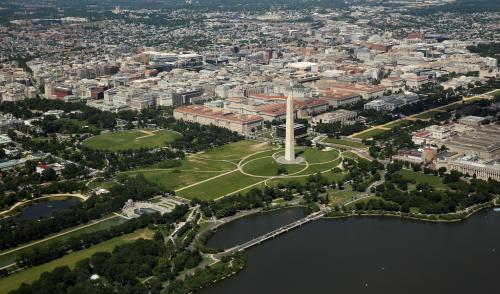
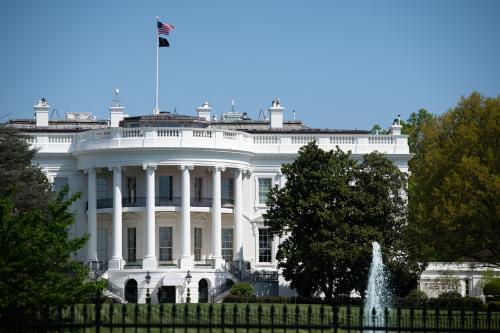
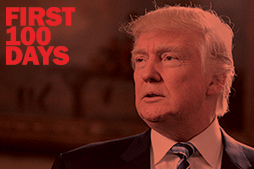
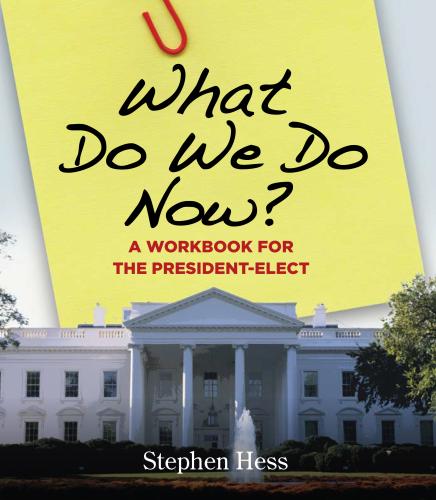

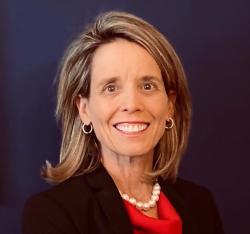



Commentary
The changing faces of Cabinet diversity, George Washington through Joe Biden
April 13, 2021